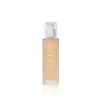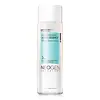What's inside
What's inside
 Key Ingredients
Key Ingredients

 Benefits
Benefits

 Concerns
Concerns

No concerns
 Ingredients Side-by-side
Ingredients Side-by-side

Bacillus Ferment Filtrate
Skin ConditioningDipropylene Glycol
HumectantButylene Glycol
HumectantGlycerin
Humectant1,2-Hexanediol
Skin ConditioningOpuntia Ficus-Indica Stem Extract
Skin ConditioningPolyglyceryl-10 Laurate
Skin ConditioningAmmonium Acryloyldimethyltaurate/Vp Copolymer
Trehalose
HumectantAdenosine
Skin ConditioningTheobroma Cacao Seed Extract
AntioxidantTromethamine
BufferingTocopherol
AntioxidantOpuntia Ficus-Indica Seed Oil
EmollientCeramide NP
Skin ConditioningPhytosphingosine
Skin ConditioningHydrogenated Lecithin
EmulsifyingEthylhexylglycerin
Skin ConditioningDisodium EDTA
Parfum
MaskingBenzyl Salicylate
PerfumingHexyl Cinnamal
PerfumingBacillus Ferment Filtrate, Dipropylene Glycol, Butylene Glycol, Glycerin, 1,2-Hexanediol, Opuntia Ficus-Indica Stem Extract, Polyglyceryl-10 Laurate, Ammonium Acryloyldimethyltaurate/Vp Copolymer, Trehalose, Adenosine, Theobroma Cacao Seed Extract, Tromethamine, Tocopherol, Opuntia Ficus-Indica Seed Oil, Ceramide NP, Phytosphingosine, Hydrogenated Lecithin, Ethylhexylglycerin, Disodium EDTA, Parfum, Benzyl Salicylate, Hexyl Cinnamal
Bifida Ferment Lysate
Skin ConditioningSaccharomyces Ferment Filtrate
HumectantBetula Platyphylla Japonica Juice
Skin ConditioningRice Ferment Filtrate
Skin ConditioningAspergillus Ferment
Skin ConditioningGlycerin
HumectantDipropylene Glycol
HumectantMethyl Gluceth-20
HumectantWater
Skin ConditioningBetaine
HumectantCamellia Sinensis Leaf Extract
AntimicrobialEthylhexylglycerin
Skin ConditioningTrehalose
HumectantLactobacillus
Skin ConditioningPEG-60 Hydrogenated Castor Oil
EmulsifyingCaprylyl Glycol
EmollientTrideceth-10
CleansingAcrylates/C10-30 Alkyl Acrylate Crosspolymer
Emulsion StabilisingTromethamine
Buffering1,2-Hexanediol
Skin ConditioningTropolone
Skin ConditioningAllantoin
Skin ConditioningButylene Glycol
HumectantCoptis Japonica Extract
AntimicrobialArginine
MaskingHydroxypropyl Methylcellulose
Emulsion StabilisingHydrogenated Lecithin
EmulsifyingCI 77220
Cosmetic ColorantSodium Hyaluronate
HumectantAdenosine
Skin ConditioningNiacinamide
SmoothingDextrin
AbsorbentGlycine
BufferingSerine
MaskingGlutamic Acid
HumectantAspartic Acid
MaskingLeucine
Skin ConditioningAlanine
MaskingLysine
Skin ConditioningTyrosine
MaskingPhenylalanine
MaskingProline
Skin ConditioningThreonine
Valine
MaskingIsoleucine
Skin ConditioningPhenoxyethanol
PreservativeHistidine
HumectantMethionine
Skin ConditioningCysteine
AntioxidantBifida Ferment Lysate, Saccharomyces Ferment Filtrate, Betula Platyphylla Japonica Juice, Rice Ferment Filtrate, Aspergillus Ferment, Glycerin, Dipropylene Glycol, Methyl Gluceth-20, Water, Betaine, Camellia Sinensis Leaf Extract, Ethylhexylglycerin, Trehalose, Lactobacillus, PEG-60 Hydrogenated Castor Oil, Caprylyl Glycol, Trideceth-10, Acrylates/C10-30 Alkyl Acrylate Crosspolymer, Tromethamine, 1,2-Hexanediol, Tropolone, Allantoin, Butylene Glycol, Coptis Japonica Extract, Arginine, Hydroxypropyl Methylcellulose, Hydrogenated Lecithin, CI 77220, Sodium Hyaluronate, Adenosine, Niacinamide, Dextrin, Glycine, Serine, Glutamic Acid, Aspartic Acid, Leucine, Alanine, Lysine, Tyrosine, Phenylalanine, Proline, Threonine, Valine, Isoleucine, Phenoxyethanol, Histidine, Methionine, Cysteine
 Reviews
Reviews

Ingredients Explained
These ingredients are found in both products.
Ingredients higher up in an ingredient list are typically present in a larger amount.
1,2-Hexanediol is a synthetic liquid and another multi-functional powerhouse.
It is a:
- Humectant, drawing moisture into the skin
- Emollient, helping to soften skin
- Solvent, dispersing and stabilizing formulas
- Preservative booster, enhancing the antimicrobial activity of other preservatives
Adenosine is in every living organism. It is one of four components in nucleic acids that helps store our DNA.
Adenosine has many benefits when used. These benefits include hydrating the skin, smoothing skin, and reducing wrinkles. Once applied, adenosine increases collagen production. It also helps with improving firmness and tissue repair.
Studies have found adenosine may also help with wound healing.
In skincare products, Adenosine is usually derived from yeast.
Learn more about AdenosineButylene Glycol (or BG) is used within cosmetic products for a few different reasons:
Overall, Butylene Glycol is a safe and well-rounded ingredient that works well with other ingredients.
Though this ingredient works well with most skin types, some people with sensitive skin may experience a reaction such as allergic rashes, closed comedones, or itchiness.
Learn more about Butylene GlycolDipropylene Glycol is a synthetically created humectant, stabilizer, and solvent.
This ingredient helps:
Dipropylene glycol is technically an alcohol, but it belongs to the glycol family (often considered part of the ‘good’ alcohols). This means it is hydrating and gentle on skin unlike drying solvent alcohols like denatured alcohol.
As a masking agent, Dipropylene Glycol can be used to cover the smell of other ingredients. However, it does not have a scent.
Studies show Dipropylene Glycol is considered safe to use in skincare.
Learn more about Dipropylene GlycolEthylhexylglycerin (we can't pronounce this either) is commonly used as a preservative and skin softener. It is derived from glyceryl.
You might see Ethylhexylglycerin often paired with other preservatives such as phenoxyethanol. Ethylhexylglycerin has been found to increase the effectiveness of these other preservatives.
Glycerin is already naturally found in your skin. It helps moisturize and protect your skin.
A study from 2016 found glycerin to be more effective as a humectant than AHAs and hyaluronic acid.
As a humectant, it helps the skin stay hydrated by pulling moisture to your skin. The low molecular weight of glycerin allows it to pull moisture into the deeper layers of your skin.
Hydrated skin improves your skin barrier; Your skin barrier helps protect against irritants and bacteria.
Glycerin has also been found to have antimicrobial and antiviral properties. Due to these properties, glycerin is often used in wound and burn treatments.
In cosmetics, glycerin is usually derived from plants such as soybean or palm. However, it can also be sourced from animals, such as tallow or animal fat.
This ingredient is organic, colorless, odorless, and non-toxic.
Glycerin is the name for this ingredient in American English. British English uses Glycerol/Glycerine.
Learn more about GlycerinHydrogenated Lecithin is created from the hydrogenation of lecithin (a group of phospholipids). Hydrogenation is a chemical reaction between hydrogen and another element.
This ingredient is an emollient and emulsifier. As an emollient, it helps soften skin by trapping moisture within. As an emulsifier, it prevents oil and water ingredients from separating.
Trehalose is a disaccharide made of two glucose molecules (glucose is sugar!). Trehalose is used to help moisturize skin. It also has antioxidant properties.
As a humectant, trehalose helps draw moisture from the air to your skin. This helps keep your skin hydrated.
Due to its antioxidant properties, trehalose may help with signs of aging. Antioxidants help fight free-radical molecules, unstable molecules that may damage your skin.
In medicine, trehalose and hyaluronic acid are used to help treat dry eyes.
Some animals, plants, and bacteria create trehalose as a source of energy to survive freeze or lack of water.
Learn more about TrehaloseTromethamine helps balance the pH and improve the texture of a product. It is synthetically created.
As an emulsifier, Tromethamine prevents oil and water ingredients from separating. This helps stabilize the product and elongate a product's shelf life. Tromethamine also makes a product thicker.
Tromethamine helps balance the pH level of a product. Normal pH level of skin is slightly acidic (~4.75-5.5). The acidity of our skin is maintained by our glands and skin biome. Being slightly acidic allows our skin to create an "acid mantle". This acid mantle is a thin barrier that protects our skin from bacteria and contaminants.
Oral Tromethanmine is an anti-inflammatory drug but plays the role of masking, adding fragrance, and/or balancing pH in skincare.
1,3-Propanediol, 2-amino-2-(hydroxymethyl)-
Learn more about Tromethamine